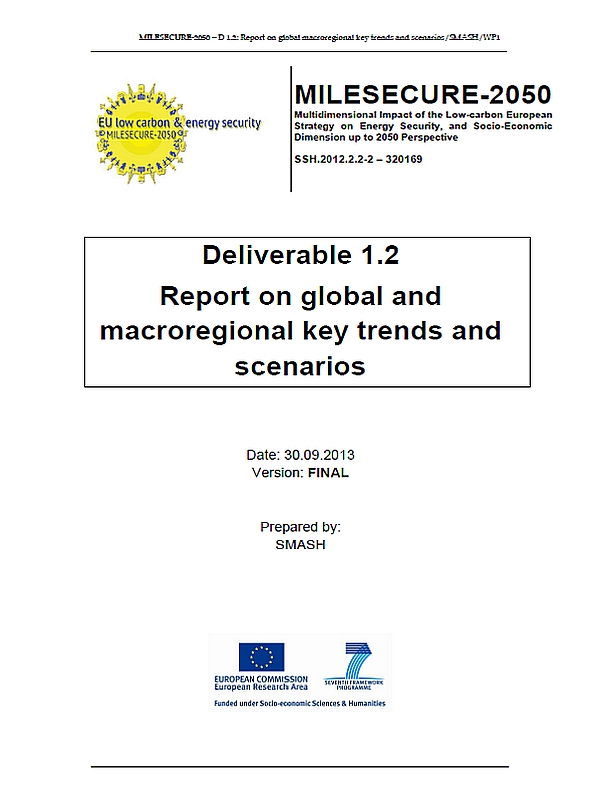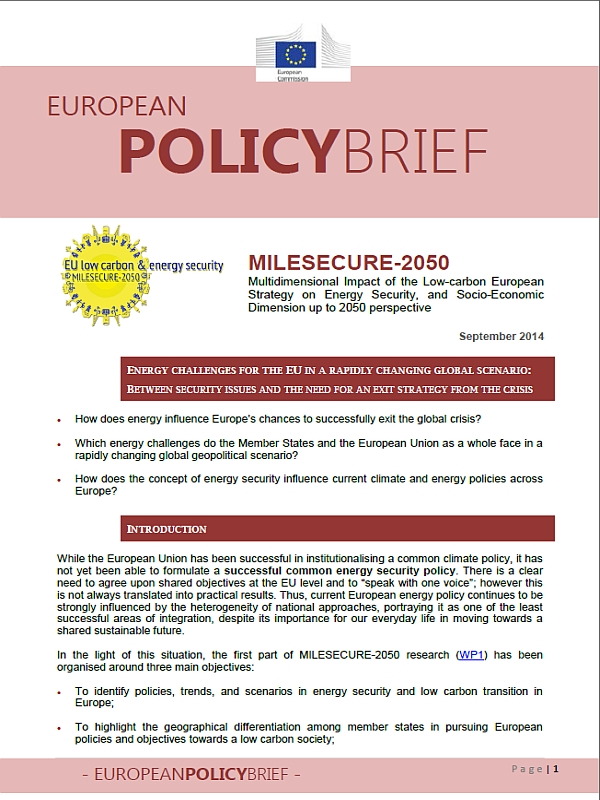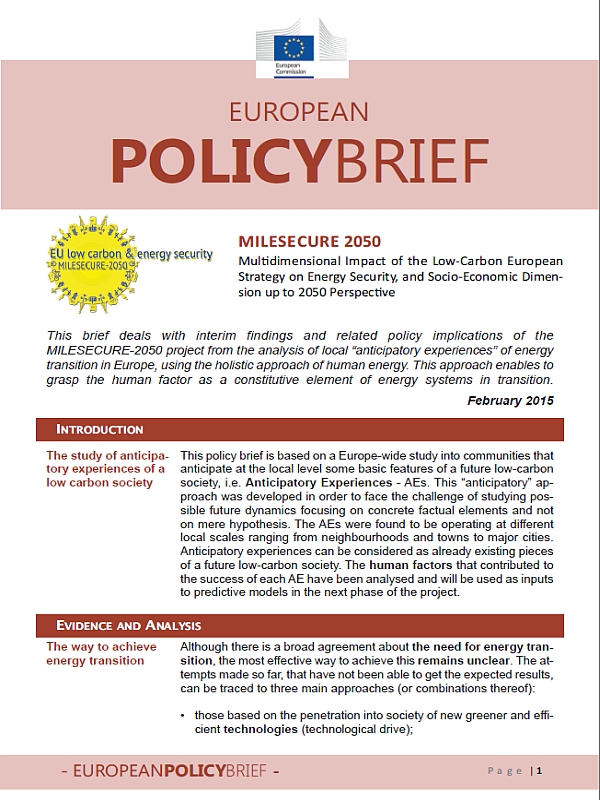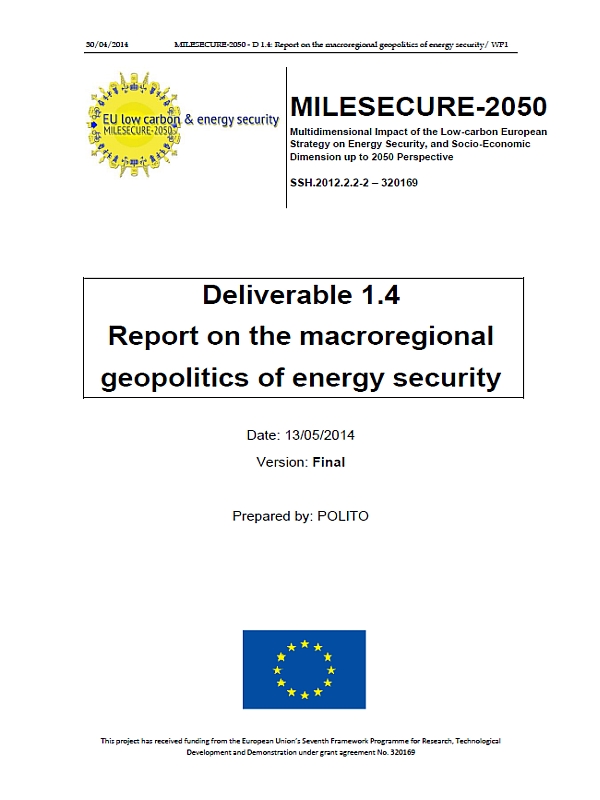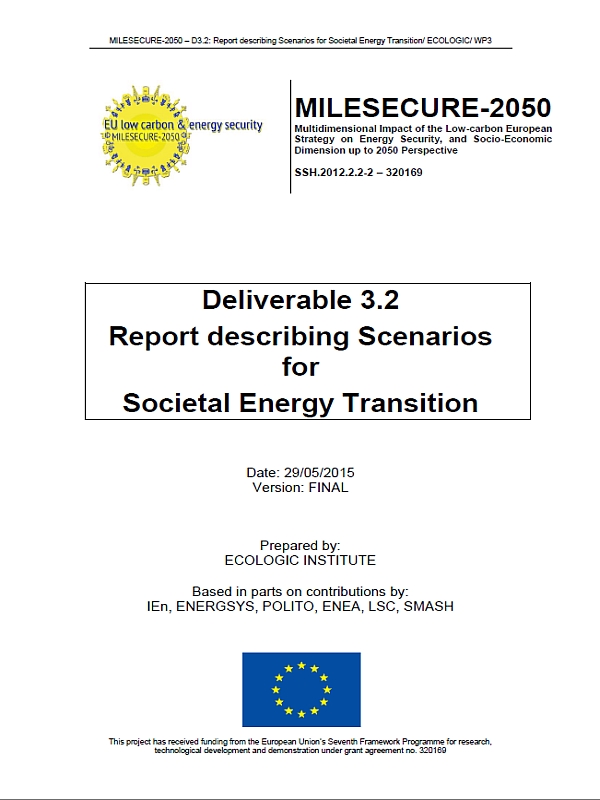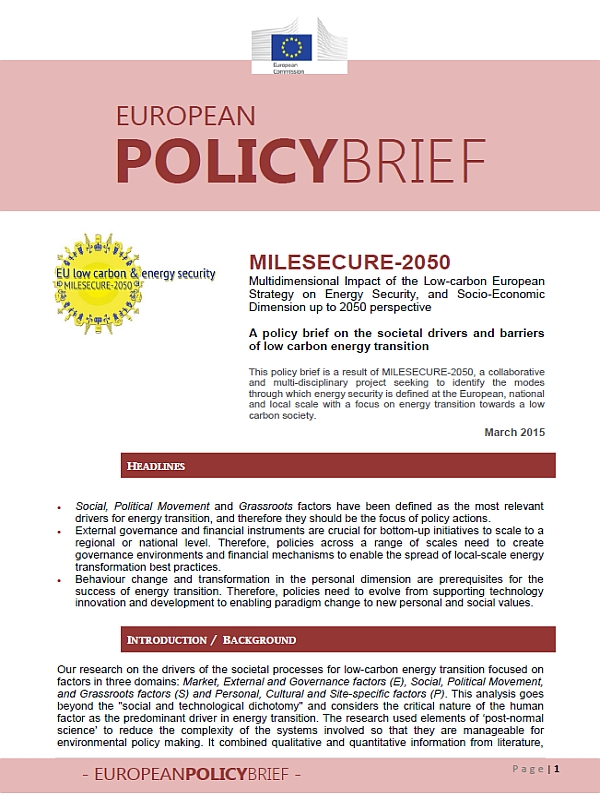Report on Global and Macroregional Key Trends and Scenarios
Milesecure 2050 Deliverable 1.2
- Publikation
- Zitiervorschlag
Cassen, Christophe; Meriem Hamdi-Chérif; Myriam Cherbib et al. 2013: Milesecure 2050 Deliverable 1.2 – Report on Global and Macroregional Key Trends and Scenarios. SMASH, Paris.
Cassen, Christophe; Meriem Hamdi-Chérif; Myriam Cherbib et al. 2013: Milesecure 2050 Deliverable 1.2 – Report on Global and Macroregional Key Trends and Scenarios. SMASH, Paris.
- Sprache
-
Englisch
- Autorenschaft
-
Max GrünigChristophe Cassen (SMASH)Meriem Hamdi-Chérif (SMASH)Myriam Cherbib (SMASH)Jean Charles Hourcade (SMASH)Zygmunt Parczewski (IEN)Adam Umer (EnergSys)Gabriele Quinti (LSC)
- Finanzierung
-
Europäische Kommission, Generaldirektion Forschung & Innovation (GD Forschung & Innovation), International - Verlag
-
Société de Mathématiques Appliquées et de Sciences Humaines (SMASH), Frankreich - Jahr
- Umfang
- 118 S.
- Projekt
- Projekt-ID
- Inhaltsverzeichnis
-
Gesamtes Inhaltsverzeichnis
1. Executive summary
2. Introduction
3. Macro-economic scenarios: approach and methodology
3.1 Presentation of the scenarios set and models
3.1.1 Modeling exercises considered
3.1.2 Types of models
3.1.3 Structure of the scenarios
3.2 Socio-Economic drivers
3.2.1 Population growth
3.2.2 Macro-economic development
3.2.3 Energy Intensity
3.3 Technical change: deployment of technologies
3.4 Energy and carbon prices
3.4.1 Oil reserves/resources
3.4.2 Emission pathways
4. Features of the low carbon and energy transition given climate constraints (globally and by sector)
4.1 The low carbon transition requires significant transformations of the energy system
4.1.1 Global changes in the Energy mix
4.1.2 Regional potentials of RES
4.1.3 Sectoral changes in the Energy supply
4.2 The LCS vision is achievable under modeling technological options
4.3 A transition associated with moderate average global costs
4.4 The three flexibilities
5. Regional perspectives
5.1 OECD countries
5.2 The “giants”: India and China
6. A basic vision of transition dynamics for assessing the interactions between climate policies and energy security issues?
6.1 A climate and technology-centric drift
6.2 Second best world or Second best policies?
6.3 Co-benefits and trade-offs between climate policies and energy security
7. Conclusions
8. Annexes
9. Abbreviations
10. References - Schlüsselwörter
Übergang zu kohlenstoffarmer Energiesicherheit (MILESECURE 2050)
- Dauer
-
-
- Finanzierung
-
Europäische Kommission, Generaldirektion Forschung & Innovation (GD Forschung & Innovation), International
Milesecure 2050 Societal Processes of Energy Transition. March 2015. Milesecure 2050 Policy Brief. Turin: Politecnico di Torino.
Milesecure 2050 Analysis of energy policies, trends and existing scenarios from the national to the worldwide. September 2014. Milesecure 2050 Policy Brief. Turin: Politecnico di Torino.
Milesecure 2050 Analysis of Concrete Anticipatory Experiences on Energy Transition at the Local Level. February 2015. Milesecure 2050 Policy Brief. Turin: Politecnico di Torino.
Crivello, Silvia; Marat Karatayev; Patrizia Lombardi et al. 2013: Milesecure 2050 Deliverable 1.3 - Report on Main Trends in European Energy Policies Politecnico di Torino, Torino.
Armao, Fabio; Silvia Crivello; Patrizia Lombardi et al. 2014: Milesecure 2050 Deliverable 1.4 - Report on the Macroregional Geopolitics of Energy Security. Politecnico di Torino, Torino.
Pearson, Adam; Max Grünig; Andreas Prahl et al. 2014: Milesecure 2050 Deliverable 3.1 Report on Drivers of Societal Processes of Energy Transition. Ecologic Institute, Berlin.
Grünig, Max; Andreas Prahl; Katherine Weingartner et al. 2015: Milesecure 2050 Deliverable 3.2 - Report Describing Scenarios for Societal Energy Transition. Ecologic Institute, Berlin.
